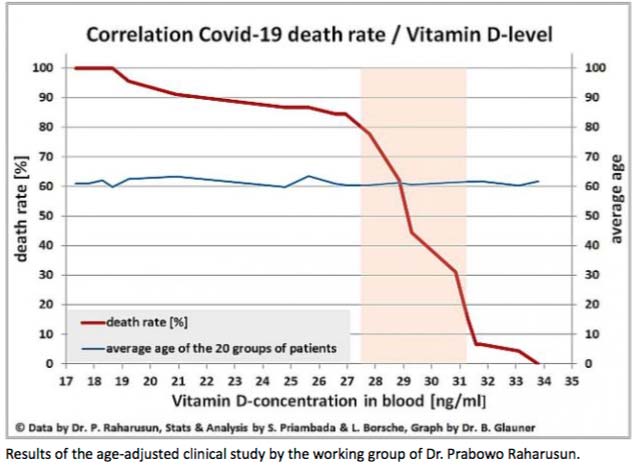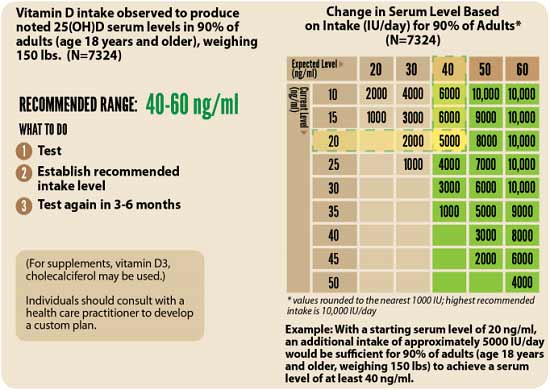How Short Fingers and Low Testosterone Make You Vulnerable
The so-called "digit ratio" could be a strong indicator of men's vulnerability to COVID-19, as it serves as an indicator of testosterone exposure in utero. Higher testosterone levels, in turn, are deemed protective due to their effects on the angiotensin-converting enzyme 2 (ACE2). The finding comes from researchers at the U.K.'s Swansea University, who delved into why more men than women are dying from COVID-19.
It's been suggested that men may be twice as likely to die from COVID-19 as women,1 and since the length of men's ring fingers may be related to testosterone levels, the researchers measured the ring fingers of 103,482 men and 83,366 women from 41 countries in relation to their index fingers.2
Shorter Ring Fingers May Indicate COVID-19 Vulnerability
To calculate digit ratio, the length of the index finger (2D) is divided by the length of the ring finger (4D). A ring finger that's longer than the index finger, which leads to a smaller digit ratio, suggests higher exposure to testosterone in the womb, and this was linked to a lower risk of dying from COVID-19.
In fact, in countries where men had a smaller digit ratio (0.976 millimeters (mm)), such as Malaysia, Russia and Mexico, COVID-19 fatality rates were lower than in countries with men who had a higher digit ratio (0.99 mm and greater, which indicates a shorter ring finger), such as the U.K., Spain and Bulgaria.3
Overall, countries with men with longer ring fingers had a COVID-19 death rate of 2.7 per 100,000, compared to 4.9 per 100,000 in countries where men had a shorter overall ring finger length.4 No such association was found in women. "Our findings support a link between high 2D:4D (low prenatal testosterone) and high severity of COVID-19 in men," the researchers explained, adding:5
"Thus, high prenatal testosterone (low 2D:4D) in men may be protective of the serious effects of COVID-19 … A strong positive association between male 2D:4D and mortality may provide a biomarker for male COVID-19 susceptibility and identify those for whom it would be advisable to exercise social distancing."
A study published in the journal Andrology similarly found a link between low testosterone levels in men and severe COVID-19. The study involved 31 men with COVID-19 who were admitted to the respiratory intensive care unit of the Carlo Poma Hospital in Mantua, Italy.
Lower baseline levels of total testosterone and calculated free testosterone levels were predictive of poor prognosis and mortality in the men.6 Speaking with Newsweek, Jeremy Rossman, honorary senior lecturer in virology at the U.K.'s University of Kent, stated:7
"It is not thought that testosterone has a direct impact on COVID-19 disease, rather that it may affect other factors, such as ACE2 expression levels … This is a very new area of study and further research will be necessary to confirm the association between testosterone levels and COVID-19 disease, as well as determine how testosterone levels affect the disease course."
Higher ACE2 in Men May Explain Lowered COVID-19 Risks
One theory for why men with shorter ring fingers have a higher risk of severe outcomes from COVID-19 has to do with ACE2, an enzyme that's beneficial in that it promotes tissue regeneration. The problem is that coronavirus binds to ACE2 and uses it to enter cells,8 where it then multiplies. Writing in The Lancet Respiratory Medicine, researchers from the University of Basel in Switzerland explained:9
"Human pathogenic coronaviruses (severe acute respiratory syndrome coronavirus [SARS-CoV] and SARS-CoV-2) bind to their target cells through angiotensin-converting enzyme 2 (ACE2), which is expressed by epithelial cells of the lung, intestine, kidney, and blood vessels."
Ironically, when levels rise high enough, ACE2 may actually be protective. Professor John Manning, lead researcher of the featured study, noted, "The theory is that someone with high prenatal testosterone — and a long ring finger — has greater levels of ACE2.
These concentrations are large enough to oppose the virus … Our findings may be men with long ring fingers will experience mild symptoms and could return to work."10 Writing in Early Human Development, the researchers further explained the paradox:11
"SARS-CoV2 enters cells via the receptor molecule ACE2. Paradoxically, the up-regulation of ACE2 relates to protective effects from COVID-19 infection, possibly because it opposes the loss of ACE2 from cell surfaces. We speculate that in men the up-regulation of ACE2 relates to high testosterone and low 2D:4D."
While the research into how ACE2 affects COVID-19 is still emerging, it's been suggested that treatment of COVID-19 should involve an increase in the amount of ACE2 in the lungs because it's protective against lung injury.12 Adding further support, research published in JAMA Cardiology suggested that reduced levels of ACE2, associated with both aging and cardiovascular disease, may increase the risk of severe COVID-19.13,14
"[T]hese observations raise an apparent paradox: Given ACE2 itself is the gateway of SARS-CoV-2 entry into cells, how can the reduction in ACE2 levels in older persons and those with CVD [cardiovascular disease] predispose for greater COVID-19 severity?" researchers asked in the journal JAMA Cardiology.15
In short, the answer may lie in the role of ACE2 as a major anti-inflammatory in renin-angiotensin system (RAS), a control systems for blood pressure and fluid balance, signaling by converting the inflammatory angiotensin II into to anti-inflammatory angiotensin 1-7.16 Cardiac Rhythm News explained:17
"[S]evere acute respiratory syndrome coronavirus 2 (SARS-CoV-2) binding to ACE2 acutely exaggerates the proinflammatory background created by lower levels of ACE 2 in this subpopulation, predisposing them to greater COVID-19 disease severity and mortality."
The Obesity Connection
There are many factors that influence your risk of COVID-19 disease severity other than the length of your ring finger, though low testosterone makes a recurring appearance in studies. This includes research funded by the German Federal Ministry of Health, which found that critically ill male COVID-19 patients often suffer from severe testosterone and dihydrotestosterone deficiencies.18
Though the study has not yet been peer-reviewed, 68.6% of the male COVID-19 patients in the study had low testosterone while 48.6% had low dihydrotestosterone levels — an important finding since both testosterone and dihydrotestosterone are necessary for the body to mount an effective antiviral immune response.19
More than 34% of the men were also obese, a condition often seen alongside low testosterone. Not only does obesity decrease total testosterone due to insulin resistance, which reduces sex hormone binding globulin, but severe obesity may reduce free testosterone levels by suppressing the hypothalamic-pituitary-testicular (HPT) axis.20
Low testosterone, in turn, increases overweight and obesity, "creating a self-perpetuating cycle of metabolic complications," researchers noted in the Asian Journal of Andrology,21 an important connection since obesity has also been highlighted as a major risk factor for severe COVID-19.
Other Ways Obesity May Increase COVID-19 Risk
Aside from low testosterone, obesity has previously been linked to lowered immune function and increased risk of infection, and NYU Grossman School researchers suggested obese COVID-19 patients are even at greater risk than those with cardiovascular disease.22
Johns Hopkins University researchers suggested obesity could also shift the burden of COVID-19 onto younger patients, finding in a dataset of 265 COVID-19 patients that younger individuals admitted to the hospital were more likely to be obese.23
Study author Dr. David Kass, who heads up the Institute of CardioScience at the Johns Hopkins School of Medicine, cited a number of reasons why COVID-19 risks are higher with obesity, including physically making it harder to breathe, leaking membranes separating the airway sacs in the lungs and blood vessels, allowing fluid to enter, and increased inflammation that's a hallmark of obesity. He also came back to ACE2:24
"Another area that I believe deserves more study is the role of the ACE2 protein in fat cells. This protein is key for the COVID-19 virus, since the virus must bind to it in order to gain entry into a cell.
It turns out fat cells express ACE2 at fairly high levels, and there are some past data on this idea related to other respiratory viruses that they can attack fat, last in fat, and shed more slowly from fat. This could make an obese individual more infectious even as their symptoms get better."
Factors to Lower COVID-19 Risk
You can't change your prenatal exposure to testosterone or the length of your ring finger, but there are many steps you can take to actively lower your risk of becoming ill from COVID-19 or another infection. At this point, it's unclear if raising testosterone levels is helpful for men in terms of COVID-19, but there are many ways to do so naturally.
Further, many of them will also help with weight loss and help to ward off viral illness, which means you have nothing to lose (except pounds) and everything to gain from trying them. For instance, limiting sugar and boosting healthy fats, engaging in high-intensity exercises and strength training, optimizing vitamin D and reducing stress are all helpful strategies shown to boost your testosterone levels naturally.
Overall, it's crucial to lead a healthy lifestyle, as according to a study by The Istituto Superiore di Sanità, Italy's national health authority,25 more than 99% of fatalities from COVID-19 occurred among people who had underlying medical conditions. Among the fatalities, 76.1% had high blood pressure, 35.5% had diabetes and 33% had heart disease.26
Intermittent fasting is therefore highly recommended, as it promotes insulin sensitivity and improves blood sugar management by increasing insulin-mediated glucose uptake rates.27 This is important not only for resolving Type 2 diabetes but also high blood pressure and obesity, as well as enhancing testosterone.
It helps boost testosterone by improving the expression of satiety hormones like insulin, leptin, adiponectin, glucagon-like peptide-1 (GLP-1), cholecystokinin (CKK) and melanocortins, which are linked to healthy testosterone function, increased libido and the prevention of age-induced testosterone decline.
So, you can see how when you begin to make positive lifestyle changes, it leads to a cascade of beneficial changes in your body, all of which act together to ward off infection and disease. If you're concerned that a short ring finger indicative of low testosterone, obesity or another above-mentioned chronic condition may be raising your risk of severe COVID-19, take action to get healthier today.
from Articles https://ift.tt/2YsUdr7
via IFTTT







